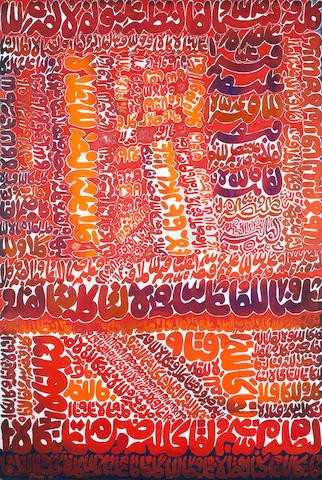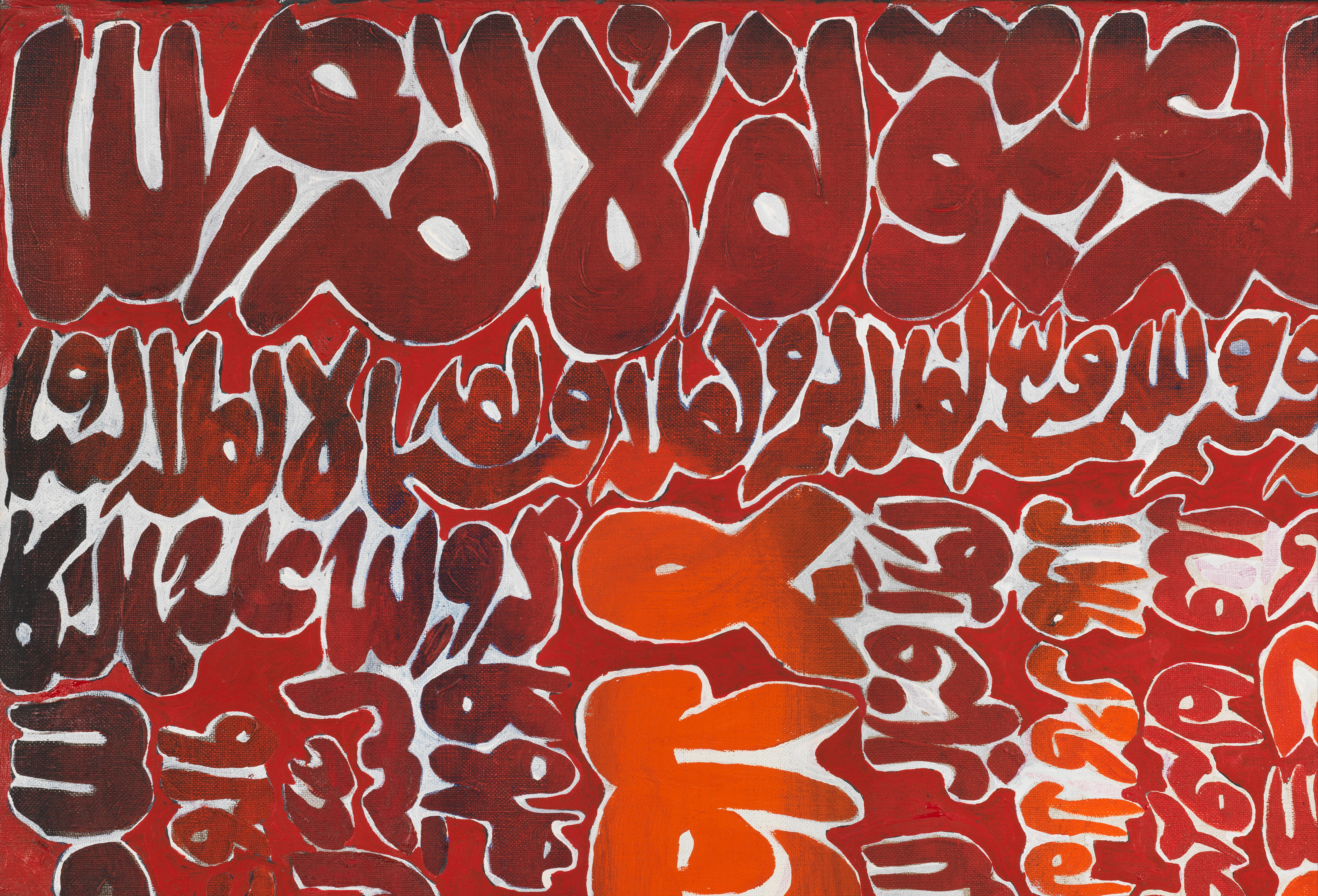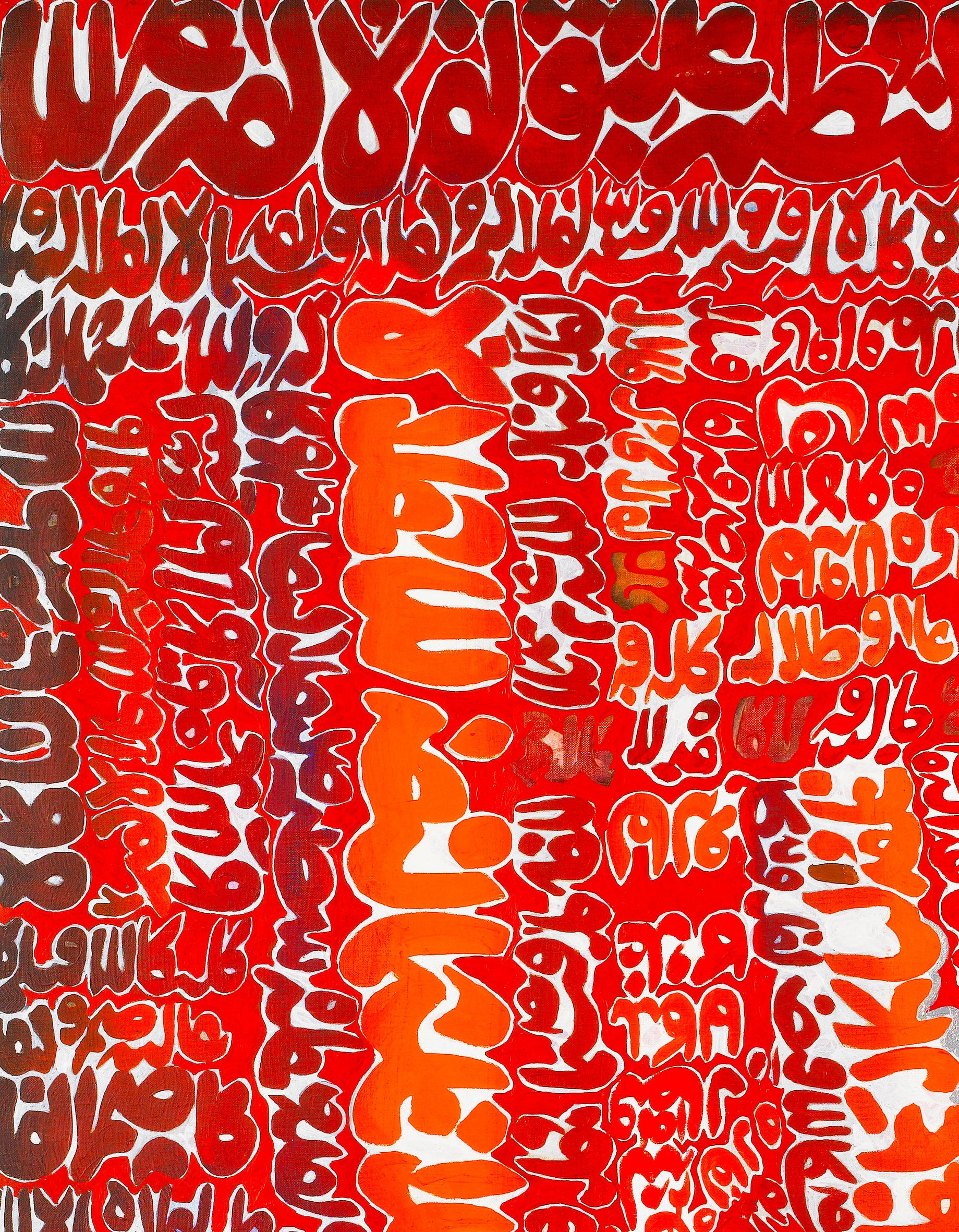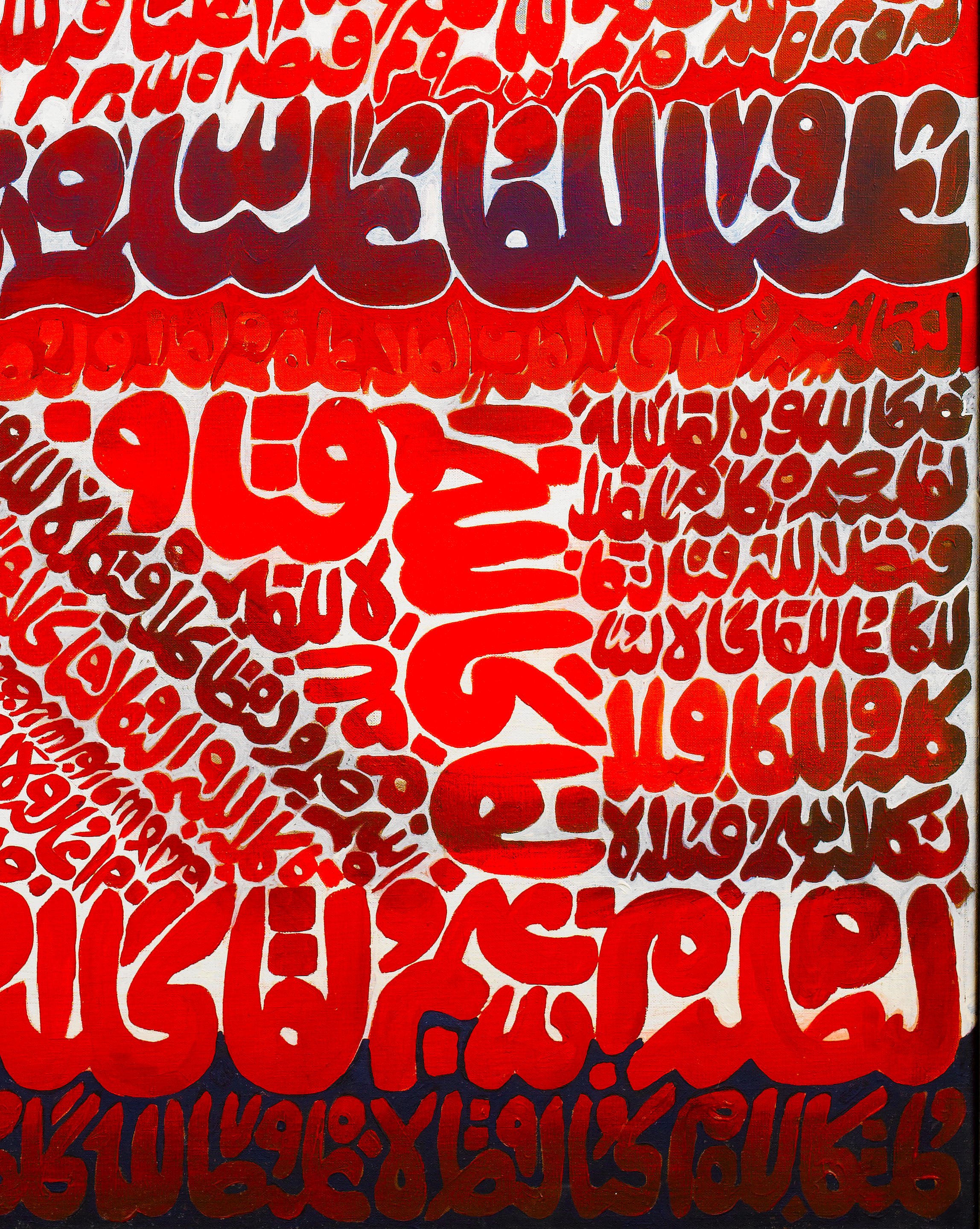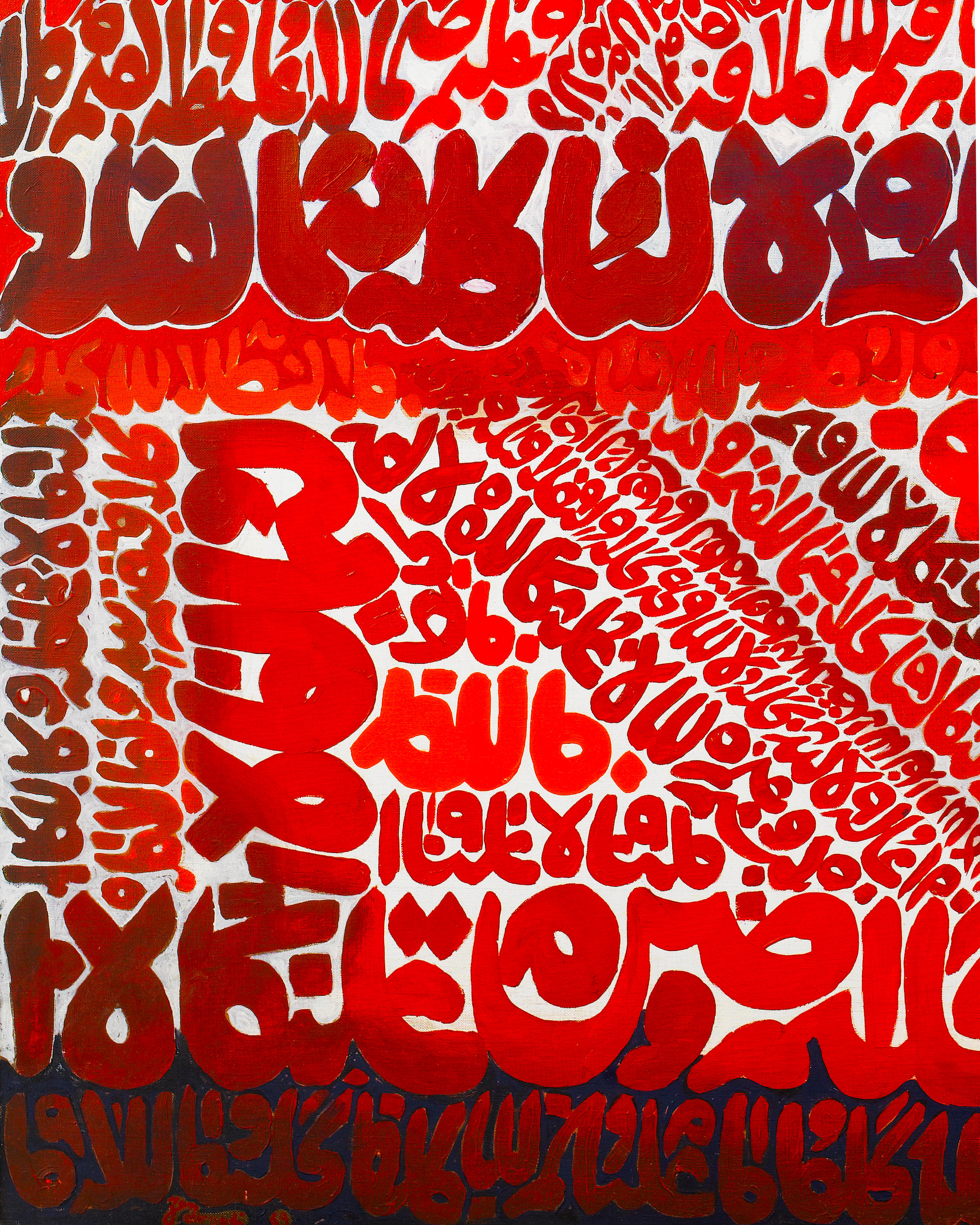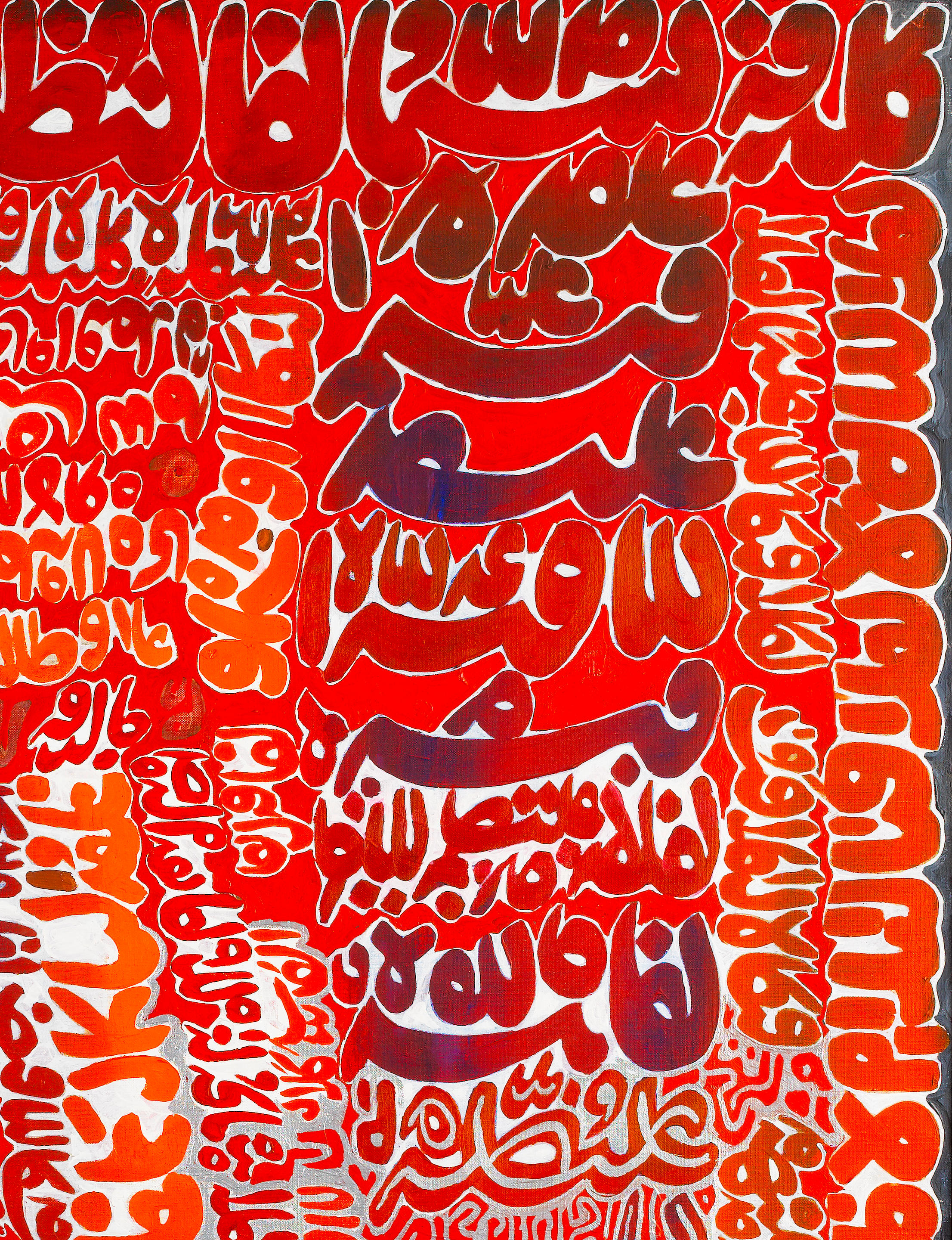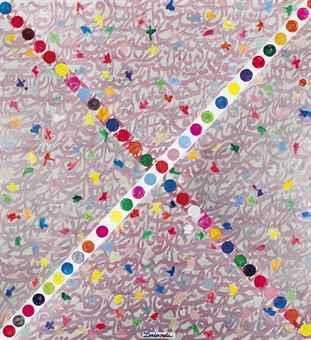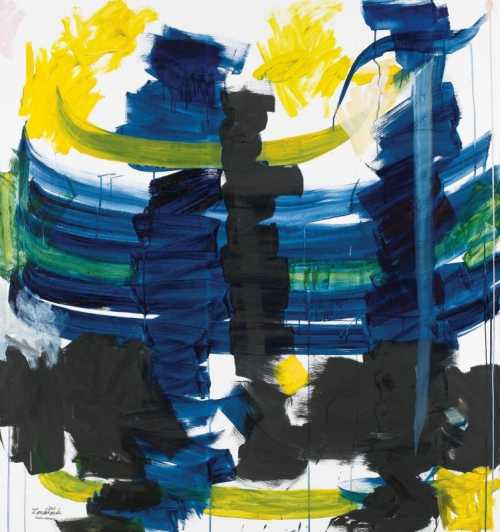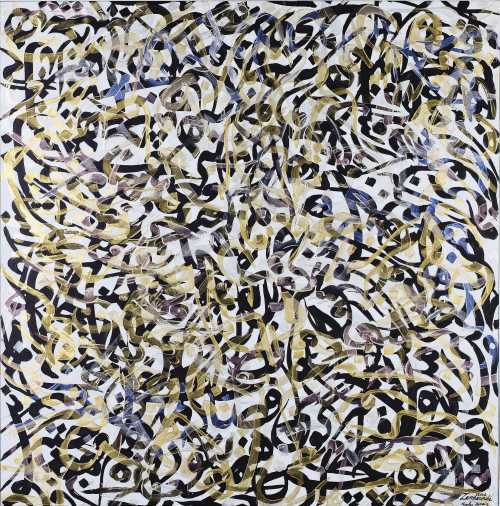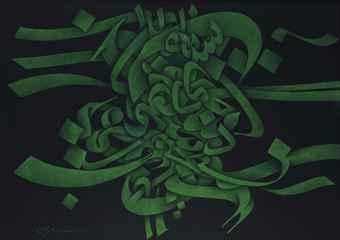- Untitled
- oil and metallic paint on canvas
- Painting, Calligraphy Painting
- 97 * 146 cm
- signed on reverse, framed
Artwork Description
- Provenance:
Private French collection; formerly in collection of Michel Tapie, Paris.
Michel Tapié was an important critic in the post-war French art scene. Early on in his career he studied foreign art production in the United States, Japan and Iran. In 1952 he introduced a key concept, that of L'Art Autre (other art), in which he explained that over and above representation, one has to change one's value system in order to appreciate art. The list of artists who accompanied him on this adventure is long, and one can cite, amongst others, Pollock, Dubuffet, Mathieu, Tapies, the Gutai group, Eshai and Zenderoudi.
Hossein Zenderoudi and Michel Tapié met in the mid-60s at the Stadler Gallery. This was Tapié's discovery of the Iranian avant-garde of which Zenderoudi was at the forefront. The encounter was significant to the extent that Tapié became Zenderoudi's advisor between 1971 and 1975, "La Maison de l'Iran", Galerie Cyrus. For Tapié, Middle Eastern calligraphy had an abstract power which offered 'abstract spaces', making it a striking art form during these years of turbulence in aesthetics. In this turbulence he saw not a break but a continuity with the past in the midst of the ever-changing values of the present day.
It is certainly this which he appreciated in Zenderoudi, this link between past and present, between calligraphy and abstract art. In his exhibition catalogue of March 1971 at Galerie Cyrus, Tapié illustrated the work presented here: Persian-Iranian calligraphy is masterly integrated by Zenderoudi in his hypergraphical 'Abstract Spaces'. And it is by having overruled all the pseudo-traditional academic constructs of this 'other' era, that he embodies the main message of Dada, which exists and continues to become. In this work Zenderoudi has an ability to communicate his passionate artistic messages in their essence and remain indifferent to senseless conformist traps.
Realized Price
100,765 USD
Min Estimate
60,958 USD
Max Estimate
84,908 USD
Average Artwork Worth
+64.111%
Average Growth of Artwork Worth
Sales Performance Against Estimates
Average & Median Sold Lot Value
2021 - 2025
Performance vs. Estimate
2021 - 2025
Sell-through Rate
2021 - 2025
Similar Artworks
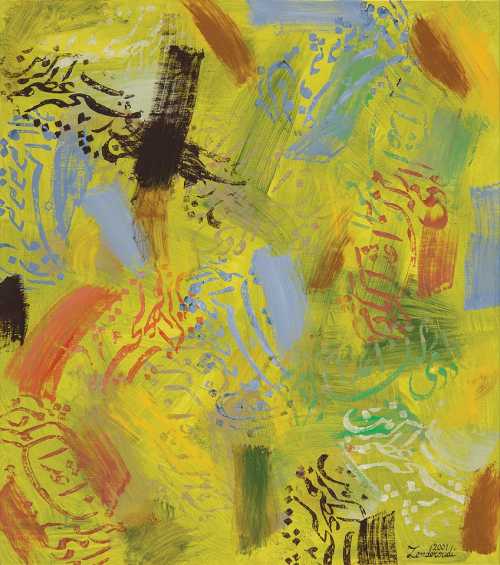
Before the Passage of Telemachus
Estimation
15,000,000,000﷼
60,000 USD
-
20,000,000,000﷼
80,000 USD
Realized Price
15,000,000,000﷼
60,000 USD
14.286%
Sale Date
Tehran
-
14 January 2022
